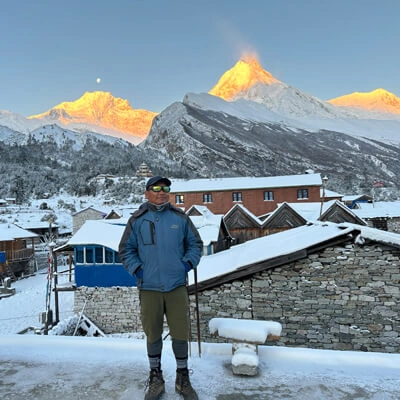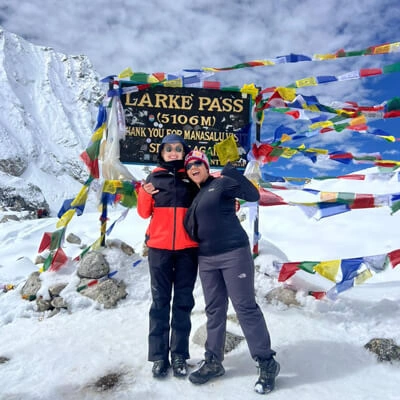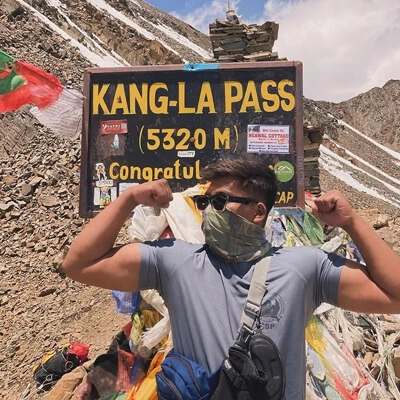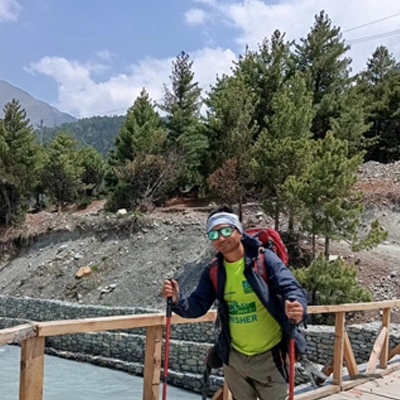Teji Festival is celebrated in the high Himalayas, including Upper Mustang, for three days on May Full Moon every year. The Tiji Festival is celebrated for three days in the fort settlement, memorializing the victory of Dhoyje Sonam with the devil. This is a story about a deity named Dhoyje Sonam, who fights against his devil father (Ma Tam Ru) to save the Kingdom of Mustang and its people from demolition. The demon father wreaks destruction on Mustang by creating a water shortage, which, in this extremely arid land, is the most precious life-sustaining resource. Dhoyje Sonam eventually defeats the devil and evicts him from the land.
The people of Mustang celebrate many festivals, such as Bhadra Mela celebrated in China, Kobang and Kunjo, Toranla in Thak Saatsae and Panch Gaon, Lhosar in Bara Gaon, etc. Among them, the Teej Festival is one of the most important festivals of Upper Mustang, according to Lo-Manthang. The ritual is known as "The Chasing of the Demons" and is performed according to Tiji myth. Mustang lies in the midwestern part of Nepal, and the Tibet border is in the north. It is in a rain shadow area behind the Himalayas; perhaps Upper Mustang is only one unspoiled Tibetan culture. As this is forbidden and isolated from the rest of the world, it was able to develop its own unique culture and tradition, which is so rich and distinctive. Lo-Manthang, the capital, is a walled city ruled by the Amipal Dynasty.
The last king, Jigme Parbal Bista, the 25th Raja of the Kingdom of Mustang, married a daughter of the Ladakh king. Upper Mustang is untouched by modern civilization; life here has been dragged on for centuries at an unhurried pace. So, it is an example of a live museum. During the Mustang Tiji Festival Trek, you will have an unforgettable experience in the high Himalayas with barren land, amazing land formations, and snow-capped mountain views. As a restricted area of Nepal, those who wish to visit Upper Mustang need special permissions and require a minimum of two people in a group. You obtain permission through the Resister trekking agency in Nepal.
The monk who performs the role of Dorje Soman must stay in seclusion for 3 months before the festival to prepare ritual dances. On the last day of the Mustang Tiji Festival ceremony, he defeats a dummy of the demon in a dance. Teej falls on the third month in the Tibetan calendar, which is in late April or early May. The most attractive part of this ceremony is the monk dance, which reflects the ancient history of the place culture and dress. Tiji is originally from the words “TEN CHE.” It means “the hope of Buddha Dharma prevailing in all worlds” and is a spring renewal.
Upper Mustang Trekking can last nine days to above three weeks as well. But for the Tiji Festival, we would like to recommend you do 16 days of trekking, which will be enough time to discover untouched places around. During the Tiji festive tour, you may combine trips to the mysterious Jhong Cave (5 stories with 144 different rooms) at Chhoser village. We have several other groups during this time, so if you like to solo trip, you can also do a solo trip by just joining a permit with others. This year, the Tiji festival is going to be celebrated on May 16, 17, and 18, 2026. We will make a revised schedule for the festival after the published schedule by the monastery.
Go through the Upper Mustang Trek Ultimate Guide for more details and information about the land full of mysteries.















